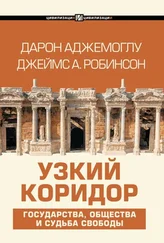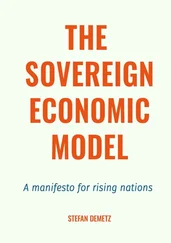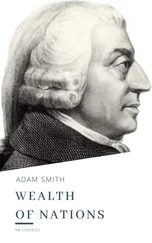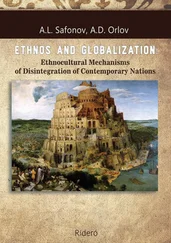This economic inclusiveness and the rise of new families through trade forced the political system to become even more open. The doge, who governed Venice, was selected for life by the General Assembly. Though a general gathering of all citizens, in practice the General Assembly was dominated by a core group of powerful families. Though the doge was very powerful, his power was gradually reduced over time by changes in political institutions. After 1032 the doge was elected along with a newly created Ducal Council, whose job was also to ensure that the doge did not acquire absolute power. The first doge hemmed in by this council, Domenico Flabianico, was a wealthy silk merchant from a family that had not previously held high office. This institutional change was followed by a huge expansion of Venetian mercantile and naval power. In 1082 Venice was granted extensive trade privileges in Constantinople, and a Venetian Quarter was created in that city. It soon housed ten thousand Venetians. Here we see inclusive economic and political institutions beginning to work in tandem.
The economic expansion of Venice, which created more pressure for political change, exploded after the changes in political and economic institutions that followed the murder of the doge in 1171. The first important innovation was the creation of a Great Council, which was to be the ultimate source of political power in Venice from this point on. The council was made up of officeholders of the Venetian state, such as judges, and was dominated by aristocrats. In addition to these officeholders, each year a hundred new members were nominated to the council by a nominating committee whose four members were chosen by lot from the existing council. The council also subsequently chose the members for two subcouncils, the Senate and the Council of Forty, which had various legislative and executive tasks. The Great Council also chose the Ducal Council, which was expanded from two to six members. The second innovation was the creation of yet another council, chosen by the Great Council by lot, to nominate the doge. Though the choice had to be ratified by the General Assembly, since they nominated only one person, this effectively gave the choice of doge to the council. The third innovation was that a new doge had to swear an oath of office that circumscribed ducal power. Over time these constraints were continually expanded so that subsequent doges had to obey magistrates, then have all their decisions approved by the Ducal Council. The Ducal Council also took on the role of ensuring that the doge obeyed all decisions of the Great Council.
These political reforms led to a further series of institutional innovations: in law, the creation of independent magistrates, courts, a court of appeals, and new private contract and bankruptcy laws. These new Venetian economic institutions allowed the creation of new legal business forms and new types of contracts. There was rapid financial innovation, and we see the beginnings of modern banking around this time in Venice. The dynamic moving Venice toward fully inclusive institutions looked unstoppable.
But there was a tension in all this. Economic growth supported by the inclusive Venetian institutions was accompanied by creative destruction. Each new wave of enterprising young men who became rich via the commenda or other similar economic institutions tended to reduce the profits and economic success of established elites. And they did not just reduce their profits; they also challenged their political power. Thus there was always a temptation, if they could get away with it, for the existing elites sitting in the Great Council to close down the system to these new people.
At the Great Council’s inception, membership was determined each year. As we saw, at the end of the year, four electors were randomly chosen to nominate a hundred members for the next year, who were automatically selected. On October 3, 1286, a proposal was made to the Great Council that the rules be amended so that nominations had to be confirmed by a majority in the Council of Forty, which was tightly controlled by elite families. This would have given this elite veto power over new nominations to the council, something they previously had not had. The proposal was defeated. On October 5, 1286, another proposal was put forth; this time it passed. From then on there was to be automatic confirmation of a person if his fathers and grandfathers had served on the council. Otherwise, confirmation was required by the Ducal Council. On October 17 another change in the rules was passed stipulating that an appointment to the Great Council must be approved by the Council of Forty, the doge, and the Ducal Council.
The debates and constitutional amendments of 1286 presaged La Serrata (“The Closure”) of Venice. In February 1297, it was decided that if you had been a member of the Great Council in the previous four years, you received automatic nomination and approval. New nominations now had to be approved by the Council of Forty, but with only twelve votes. After September 11, 1298, current members and their families no longer needed confirmation. The Great Council was now effectively sealed to outsiders, and the initial incumbents had become a hereditary aristocracy. The seal on this came in 1315, with the Libro d’Oro , or “Gold Book,” which was an official registry of the Venetian nobility.
Those outside this nascent nobility did not let their powers erode without a struggle. Political tensions mounted steadily in Venice between 1297 and 1315. The Great Council partially responded by making itself bigger. In an attempt to co-opt its most vocal opponents, it grew from 450 to 1,500. This expansion was complemented by repression. A police force was introduced for the first time in 1310, and there was a steady growth in domestic coercion, undoubtedly as a way of solidifying the new political order.
Having implemented a political Serrata , the Great Council then moved to adopt an economic Serrata . The switch toward extractive political institutions was now being followed by a move toward extractive economic institutions. Most important, they banned the use of commenda contracts, one of the great institutional innovations that had made Venice rich. This shouldn’t be a surprise: the commenda benefited new merchants, and now the established elite was trying to exclude them. This was just one step toward more extractive economic institutions. Another step came when, starting in 1314, the Venetian state began to take over and nationalize trade. It organized state galleys to engage in trade and, from 1324 on, began to charge individuals high levels of taxes if they wanted to engage in trade. Long-distance trade became the preserve of the nobility. This was the beginning of the end of Venetian prosperity. With the main lines of business monopolized by the increasingly narrow elite, the decline was under way. Venice appeared to have been on the brink of becoming the world’s first inclusive society, but it fell to a coup. Political and economic institutions became more extractive, and Venice began to experience economic decline. By 1500 the population had shrunk to one hundred thousand. Between 1650 and 1800, when the population of Europe rapidly expanded, that of Venice contracted.
Today the only economy Venice has, apart from a bit of fishing, is tourism. Instead of pioneering trade routes and economic institutions, Venetians make pizza and ice cream and blow colored glass for hordes of foreigners. The tourists come to see the pre -Serrata wonders of Venice, such as the Doge’s Palace and the lions of St. Mark’s Cathedral, which were looted from Byzantium when Venice ruled the Mediterranean. Venice went from economic powerhouse to museum.
IN THIS CHAPTER we focus on the historical development of institutions in different parts of the world and explain why they evolved in different ways. We saw in chapter 4 how the institutions of Western Europe diverged from those in Eastern Europe and then how those of England diverged from those in the rest of Western Europe. This was a consequence of small institutional differences, mostly resulting from institutional drift interacting with critical junctures. It might then be tempting to think that these institutional differences are the tip of a deep historical iceberg where under the waterline we find English and European institutions inexorably drifting away from those elsewhere, based on historical events dating back millennia. The rest, as they say, is history.
Читать дальше












